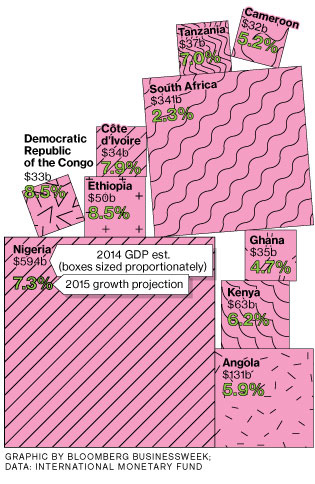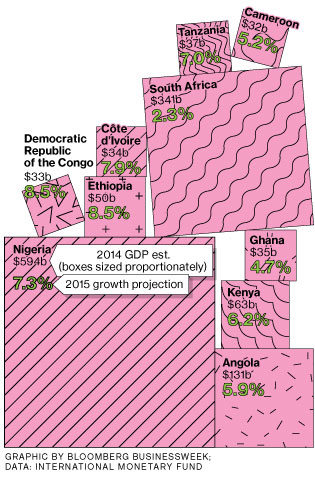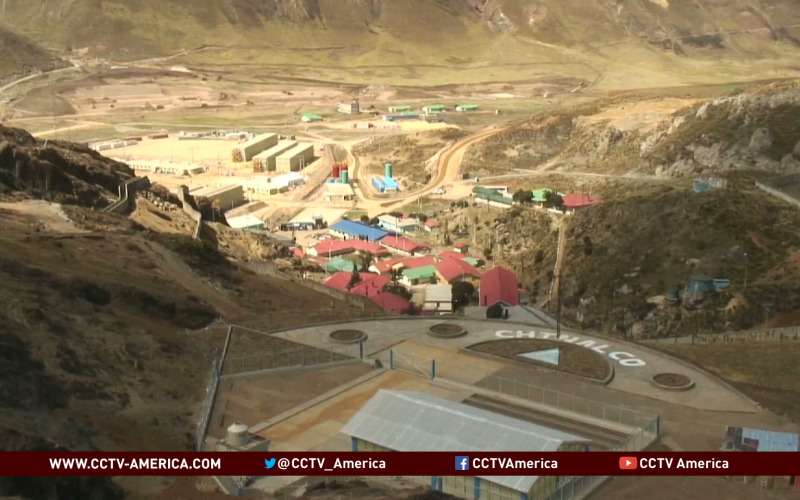ข่าวสารประเทศตลาดใหม่และอื่นๆ

Kenya, Nigeria, and Africa's New Hope for Growth
11 พฤศจิกายน พ.ศ. 2557
On the top two floors of a five-story building on Strathmore University’s campus in Nairobi, students with tablets and laptops are gradually changing the face of the East African economy. As part of the university’s master’s program in mobile telecommunications, they spend their days developing computer apps tailor-made for African markets. Their creations include Valuraha, an app that simulates trading on the Nairobi stock exchange as a teaching tool, and Henga Systems, which tracks activity on a mobile phone owner’s M-Pesa bill-payment account. A research academy at Strathmore, @iLabAfrica, has helped nurture such ideas with financial backing from about 20 companies, including Google (GOOG), Samsung(005930:KS), and Safaricom, a Kenya-based mobile phone service provider. The academy has produced 36 startups since 2011, more than half of which are still operating.
The success of such initiatives is being fueled by a 540 percent increase in mobile phone connections across the world’s poorest continent since 2005, says research firm Gartner (IT). The thriving IT economy is providing fresh impetus for the African growth that started to accelerate 20 years ago, when global prices for iron ore, oil, copper, and other commodities started their long rise, yielding billions in wealth. Almost 60 percent of Kenya’s 40.7 million people have Internet access, and 78 percent have mobile phone subscriptions. Safaricom, which began selling mobile phone services in 2006, is now East Africa’s biggest publicly traded company.
The tech boom is one of many factors boosting African economies, helping offset the effects of civil wars, Islamist militant violence, and the worst-ever outbreak of the Ebola virus across West Africa. Sub-Saharan Africa’s economy is forecast by the International Monetary Fund to grow 5 percent next year, one of the fastest rates in the world. Kenya and Nigeria are among 16 sub-Saharan countries whose economies are expected to expand more than 6 percent, according to the IMF. “The engines of growth in these markets are increasingly diverse,” says Simon Freemantle, a political economist at Johannesburg-based Standard Bank Group (SBK:SJ). “You are not simply finding growth coming out of a single exporter or a single commodity, which has previously been the case in many countries. This allows for more income accumulation outside of a high-level political and economic elite.”
Angola, Mozambique, and Kenya are gradually improving their roads, railways, and airports, removing a large obstacle to trade. Projects include an 1,800-mile rail link between Rwanda and Kenya’s port Mombasa, a hydroelectric dam in Ethiopia, and two coal-fired power plants in South Africa. Retail is also booming as chains such as Cape Town-based Shoprite and Truworths (TRU:SJ) expand to meet rising consumer spending. The number of middle-class households in 11 leading sub-Saharan economies, excluding South Africa, tripled over 14 years to 15 million, a study by Standard Bank found. Says Whitey Basson, Shoprite’s chief executive officer: “You’ve seen a complete mind shift in how governments operate and how willing they are to take investors in.”
Sub-Saharan Africa’s economic prospects would be even brighter if it weren’t for ongoing conflicts in several key markets and the Ebola outbreak. Those factors were cited by the IMF on Oct. 20 when it cut its 2014 growth forecast for the region to 5 percent, from an April estimate of 5.5 percent. In Nigeria, Boko Haram rebels have been fighting security forces for the past five years. Civil wars rage in South Sudan, the Central African Republic, and Somalia, and al-Qaeda-linked militants have killed dozens of people in Kenya. Ebola has infected about 13,500 people since December and killed about 5,000 of them, mainly in Guinea, Liberia, and Sierra Leone. Even without the epidemic and fighting, there’s plenty for the region to be concerned about: The United Nations Development Programme estimates 585 million people, or 72 percent of the African population, live in or on the brink of poverty.
Cr:http://www.businessweek.com/articles/2014-11-06/kenya-nigeria-and-africas-new-hope-for-growth
-
Namibia Sees De Beers Diamond-Sale Deal by End-December
13 พฤศจิกายน พ.ศ. 2557 -
.jpg)
Bank of Ghana Raises Policy Rate to 21%, While Cutting Range
13 พฤศจิกายน พ.ศ. 2557 -

Chinese companies invest $20B in Peru’s copper mines
13 พฤศจิกายน พ.ศ. 2557 -

Algeria signs oil deals
14 พฤศจิกายน พ.ศ. 2557

